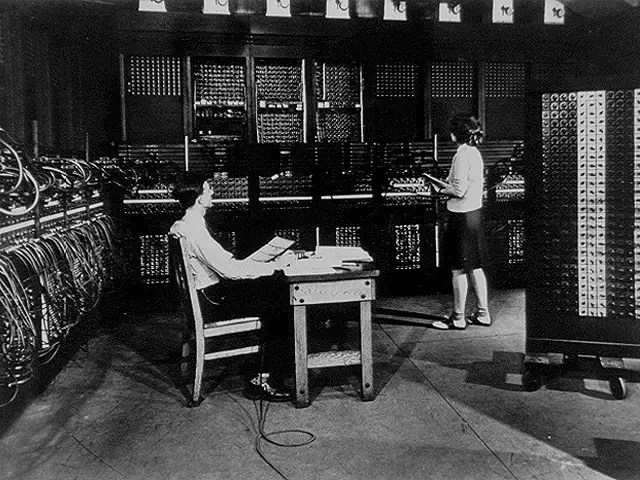The evolution of computers traces back through centuries of innovation and ingenuity, marking a journey of monumental significance in human history. At its core lies the relentless pursuit of creating devices capable of performing complex calculations and automating tasks once deemed insurmountable. Among the myriad milestones in this odyssey, one stands out as a beacon of progress: the Electronic Numerical Integrator and Computer (ENIAC). Let’s embark on a journey through the annals of computer history, exploring the profound impact of ENIAC and its enduring legacy.
A Brief History of Computer Development
The story begins with ancient computing devices like the abacus, serving as rudimentary tools for arithmetic calculations. Over time, the evolution of technology gave rise to more sophisticated instruments such as slide rules, adding machines, and punched card machines, heralding the dawn of mechanical computation. However, it was the advent of electronic computers during World War II that ushered in a new era of computing prowess. Among these pioneering machines, ENIAC emerged as a symbol of innovation and technological prowess, setting the stage for the digital revolution that would follow.
ENIAC: A Technological Marvel of Its Time
Conceived amid the crucible of war, ENIAC represented a quantum leap in computational capabilities. Designed and constructed at the Moore School of Electrical Engineering at the University of Pennsylvania, ENIAC was tasked with computing ballistic tables for the United States Army artillery—a mission critical to the Allied war effort. Towering in size and powered by thousands of vacuum tubes, ENIAC was a marvel of engineering, consuming vast amounts of electrical power to fuel its computational prowess. Despite its colossal proportions, ENIAC boasted unparalleled speed and versatility, thanks to its innovative architecture and parallel processing capabilities.
The Impact of ENIAC on Computer Technology
ENIAC’s influence transcended its wartime origins, leaving an indelible mark on the trajectory of computer technology. Here are some of the key contributions that shaped the future of computing:
Speed and Accuracy: ENIAC’s ability to perform calculations with unprecedented speed and accuracy revolutionized computational capabilities, paving the way for complex scientific simulations and engineering endeavors.
Military Applications: ENIAC’s role in military computations during World War II demonstrated the transformative power of computing in strategic decision-making and operational efficiency.
Innovation Catalyst: ENIAC’s design and architecture served as a catalyst for future innovations, inspiring the development of subsequent generations of computers and shaping the fundamental principles of computing.
Scientific Advancement: ENIAC’s computational prowess facilitated breakthroughs in scientific research, enabling weather prediction, atomic energy research, and fluid dynamics simulations that were previously unimaginable.
Educational Impact: ENIAC’s success inspired a new generation of engineers and computer scientists, igniting a passion for computing and laying the groundwork for future advancements in the field.
The Enduring Legacy
As we reflect on ENIAC’s legacy, we recognize its pivotal role in shaping the modern world. From the advent of personal computing to the dawn of the internet age, ENIAC’s influence reverberates through every facet of modern life. Its spirit of innovation and technological daring continues to inspire generations of innovators, driving forward the frontiers of human knowledge and possibility.
In conclusion, the development of computers has been an epic saga of human ingenuity and determination, with ENIAC standing as a testament to the transformative power of technology. As we navigate the complexities of the digital age, let us honor the legacy of ENIAC and the visionary pioneers who dared to dream of a world powered by computing.









